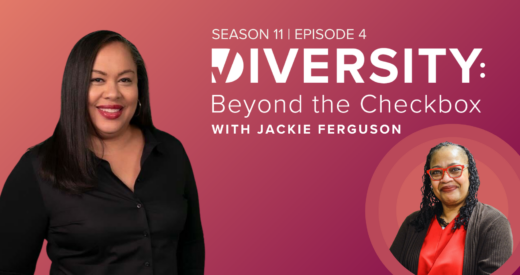Picture this: Sasha is a 20-something Colombian woman who is looking for the perfect skincare products to match her needs. Naturally, in this day and age, Sasha is being bombarded with online marketing messages across her social media pages from beauty brands with inclusive, multicultural marketing strategies. Nonetheless, she decides to visit a retail store nearby her work location so she can explore her options in real life.
At the entrance, she is greeted by a positive and energetic White, American woman named Dawn who greets her and offers to help. The conversation starts per usual retail worker/customer interaction, as Sasha explains her requirement for a skincare product that matches her unique skincare needs. She also shares a little of her cultural background in a short story about how her mother and grandmother used to take care of their skin: how her grandmother would make sugar and honey face scrubs, then gently rub olive oil into her cheeks while she drifted off to sleep.
After careful listening and observations, Dawn finds Sasha’s experience intriguing. She asks more questions about Sasha’s background and how/if she found any challenges in purchasing the right skin care products in America. Sasha feels seen, heard, and valued by Dawn’s investment in her story. She has developed a sense of comfort and belonging with a retail worker who, in fact, is a complete stranger from a totally different background than her own.
After they exchange a few words and laughs, Dawn shows Sasha a couple of products, encourages her to try them, and asks her opinion on each. She takes mental notes along the way, and finally, she recommends a product that fits Sasha perfectly. Sasha checks out, thanks Dawn for her time, and they both depart with smiles on their faces, feeling satisfied and accomplished.
There are many things we can learn from this brief story, but here’s what we will touch on today:
- Online marketing messages today are more inclusive than ever to a wide variety of target audiences, yet customers typically still aren’t making instant, online purchases.
- Sasha’s search for a retail store and inquiring help from a frontline professional prove that customers and online shoppers still desire a personalized experience in order to make a decision on certain product purchases.
- As a frontline professional, Dawn’s authentic interest in and understanding of Sasha’s cultural background allowed her to be more approachable and flexible in assisting her customer to find the right product.
- As a customer, Sasha’s experience with Dawn gave her a sense of comfort and belonging that eventually led her to make a purchase. This is the moment where brand loyalty was born, and so, it would not be a great leap to assume that Sasha will return to Dawn’s store for repeated future purchases as well.
- The cross-cultural interaction between Dawn and Sasha is a prime example of how frontline culture and its inclusive strategies can lead to marketing and sales success for many brands within a world that is already full of inclusive imagery and multicultural messages.
In light of this example, what can Marketing and PR directors and professionals learn from the cross-cultural experience between frontline professionals and customers? What are the benefits of investing financially in frontline worker marketing strategies, as opposed to online marketing messages? And why are culture and DEI-oriented education pathways important for frontline professionals in today’s world?
Despite the broad use and potency of online and digital marketing campaigns–especially for businesses without a brick-and-mortar storefront–a digital touchpoint can never beat the power of a retail associate and their ability to further the brand’s reputation or boost the customer’s in-store experience through knowledge about merchandise and inventory, according to a publication by Retail Dive.
Below are three suggestions and practical steps that PR and Marketing practitioners should consider to establish marketing success through frontline professionals as a channel:
1) Hire Diverse Frontline Workers, and Establish Target Audience Understanding
A brand that owns brick-and-mortar stores across the nation should always make sure its frontline workers come from multiple cultural backgrounds and have multicultural lived experiences. Today’s in-store buying power comes from a variety of audiences, such as immigrants from different countries, first-generation Americans, and citizens of many different races, generations, gender identities, income levels, ethnicities, religions, and more. This strategy is geared towards inclusive hiring, diversity of perspective, understanding different markets in different locations, and hiring diverse frontline workers who understand your target market’s needs.
2) Invest in Sustainable DEI Practices
You may be familiar with marketing pioneer John Wanamaker’s off-hand quote that “half the money I spend on advertising is wasted; the trouble is I don’t know which half!” Instead of knowingly wasting half your budget, consider the money you can put into training your frontline workers even once a month through a workshop around cultural competency, unconscious bias, or inclusive language. Objective, external speakers are available both online and in-person to teach your frontline professionals the skills they need for active inclusion. Look for a workshop leader who can teach them exactly which questions to ask, what to say in uncomfortable moments, and how to mitigate unconscious bias.
Also, consider conducting a sales report every few months from the moment you start these training sessions to see how much your in-store sales have increased or customer satisfaction has improved. Consistent data collection and analysis will give you a tactical, metric-based understanding of return-on-investment (ROI) and will help you understand the best way to keep moving forward. In other words, what’s working, what’s not, and where should you go from here?
3) Assign a Culture-Leader in Retail Stores
The customer/retail worker relationship can easily take a wrong turn if a frontline professional shows any sign of bias, prejudice, or stereotypical perception. For instance, in one example, the acclaimed musician SZA says she was racially profiled as a Black woman in a Sephora store in 2019. After she shared her story online, Sephora saw a quick and negative reaction from consumers, which impacted both their brand perception and sales figures. In order to avoid such potential behavior from your frontline team, inadvertently biased actions need to be called out, called in, and mitigated against.
Hiring or appointing a designated culture-leader in the store can be a great strategy for impact. But remember, this person shouldn’t act as your in-house bias police, lurking around each corner to point out exclusive behavior. Instead, they should behave as a model of inclusive leadership, ever patient and nonjudgmental, encouraging each individual employee to learn more about inclusive actions and keep learning how to do better. The best way to create in-store culture leaders is to train your current managers about inclusive leadership and tie inclusive actions directly to their performance reviews, bonuses, or promotions.
All managers should be adept at inclusion, demonstrate high intercultural competency, and show a culturally-appreciative mentality, with enough lived experience to accept the responsibility of correcting and guiding their frontline peers when they witness non-inclusive behavior.. These people are your on-the-ground culture drivers, and their impact on frontline professionals and customers cannot be underestimated. Invest in their education and retention, and your “wasted” marketing money will go to much better use.
In a nutshell, we highly encourage you, as marketing and PR professionals, to research effective DEI strategies and invest in inclusive leadership training for your frontline professionals and middle managers. Instead of simply assailing your market with online marketing messages and tracking pixels, consider how your marketing budget could be used to make the customer experience much more personal, powerful, and authentic.
To join a conversation on DEI for frontline professionals, check out our webinar, Beyond the Conference Room: DEI for Frontline Professionals.






